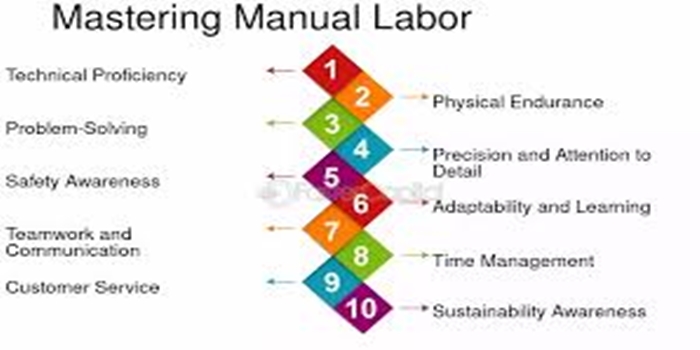In this article, we discussed physical labor care, the social and economic significance of care work, the physical and emotional challenges, improving the conditions of physical care work, and the future.
Definition
The physical labor of care refers to the physically demanding tasks involved in caregiving, such as assisting with daily activities like feeding, bathing, and moving people. This work can lead to musculoskeletal strain and other health problems for caregivers, and includes both paid and unpaid labor, from home care to healthcare settings.
The Social and Economic Significance of Care Work:
Social significance
Enables well-being and rights: Care work directly contributes to the health, well-being, and development of individuals across all life stages, from early childhood to old age.
Advances gender equality: By providing necessary care, it enables women to participate more fully in the labor force, boosting their income and helping to close the gender gap in employment.
Reduces inequality: Affordable and accessible care services, such as early childhood education, can decrease inequalities between children from different socioeconomic backgrounds.
Builds community: Both paid and unpaid care work creates relationships and builds social capital, supporting the resilience of individuals and communities.
Economic significance
Generates jobs: The care economy has the potential to create millions of decent jobs, with potential for a high return on investment.
Boosts economic growth: Investing in care infrastructure can have significant economic ripple effects, similar to other sectors.
Supports workforce participation: Quality care services allow more adults to participate in the formal workforce, increasing household incomes and contributing to national economies.
Creates lower-carbon jobs: Care sector jobs are often less carbon-intensive than those in other sectors, supporting a just transition to a sustainable economy.
Contributes to GDP: Unpaid care work alone is estimated to be worth trillions of dollars globally, highlighting its immense, often uncounted, economic value.
The Physical and Emotional Challenges:
Physical challenges
Headaches: Both tension headaches and migraines are common symptoms of stress and anxiety.
Muscle and body pain: Stress can lead to muscle aches, especially in the neck, shoulders, and back.
Digestive issues: Stomach cramps, nausea, indigestion, and conditions like irritable bowel syndrome (IBS) are linked to stress.
Cardiovascular problems: Chronic stress can lead to high blood pressure, and in severe cases, heart attacks and strokes.
Sleep disturbances: Insomnia or other disruptions to sleep patterns are common, which can then worsen both physical and mental symptoms.
Weakened immune system: Long-term stress can make the body more vulnerable to infections.
Fatigue: Persistent tiredness and low energy levels make daily tasks feel overwhelming.
Emotional challenges
Anxiety and depression: Emotional stress can manifest as persistent feelings of sadness, hopelessness, and excessive worry.
Irritability and anger: Stress can lead to increased feelings of irritability, and a shorter temper.
Social withdrawal: Individuals may lose interest in activities they once enjoyed and withdraw from social interactions.
Difficulty concentrating: Emotional distress can impair focus and concentration.
Mood swings: Emotional challenges can result in unpredictable and rapid changes in mood.
Other emotional responses: Restlessness, agitation, and even thoughts of self-harm or suicide can be signs of severe emotional distress.
Your body and mind are interconnected, and stress is a prime example of this connection.
When you are stressed, your body releases hormones that can have a variety of physical effects.
Conversely, physical health problems can take a toll on your emotional well-being.
Addressing both aspects holistically is crucial for overall health.
Manual Labour and Skills in Physical Care:
Despite misconceptions, physical care work requires significant skill, knowledge, and technique:
Body mechanics and ergonomics: Proper lifting and transfer techniques prevent injury for both caregiver and recipient.
Time management and coordination: Balancing multiple care recipients and household or clinical tasks efficiently.
Observation skills: Monitoring health, hygiene, and mobility to detect changes in condition.
Technical assistance: Operating mobility aids, medical equipment, and hygiene devices safely.
The Future of Physical Labour in Care
Integration with technology: Robotics, exoskeletons, and assistive devices can complement human labour but cannot fully replace the empathy and adaptability of human caregivers.
Formalization of domestic care: Policy reforms may provide legal recognition, wages, and social benefits to unpaid household caregivers.
Workforce expansion: Growing aging populations worldwide are increasing demand for trained care workers, highlighting both economic opportunity and social responsibility.
Intersectional approaches: Policies must address gender, class, and migration dimensions, as care labour disproportionately involves women and marginalized communities.
Conclusion
The Physical Labor of Care emphasizes that this work is a skilled, essential, and demanding investment in human well-being, yet it remains undervalued by society.

